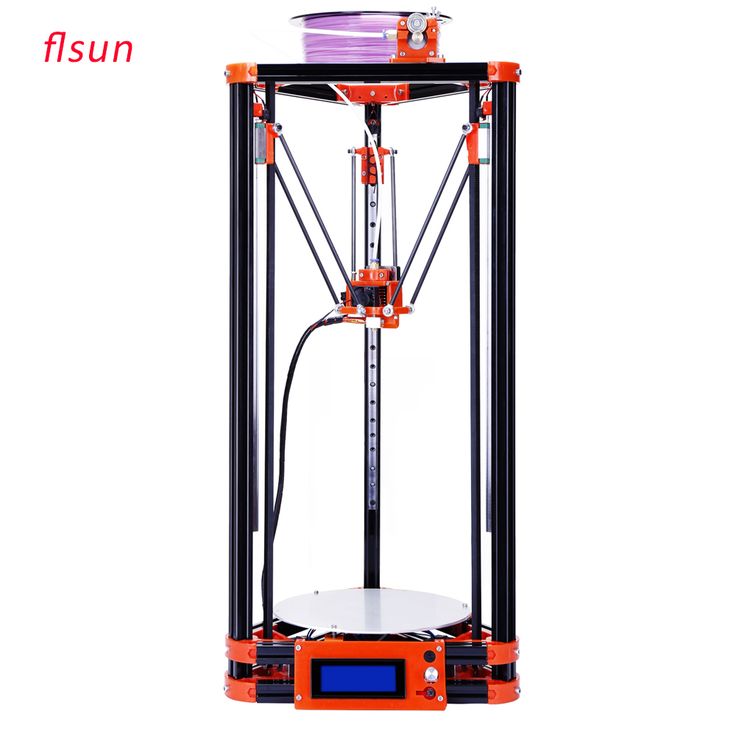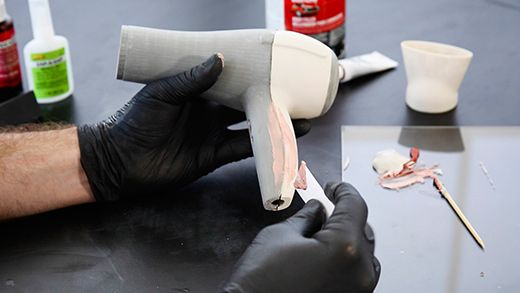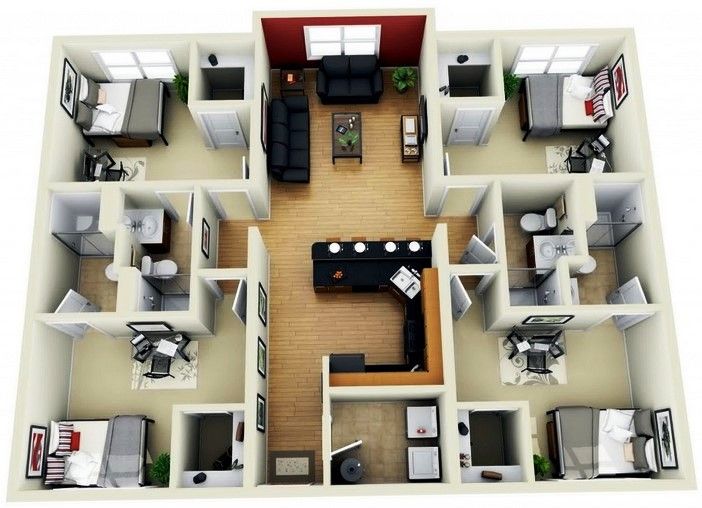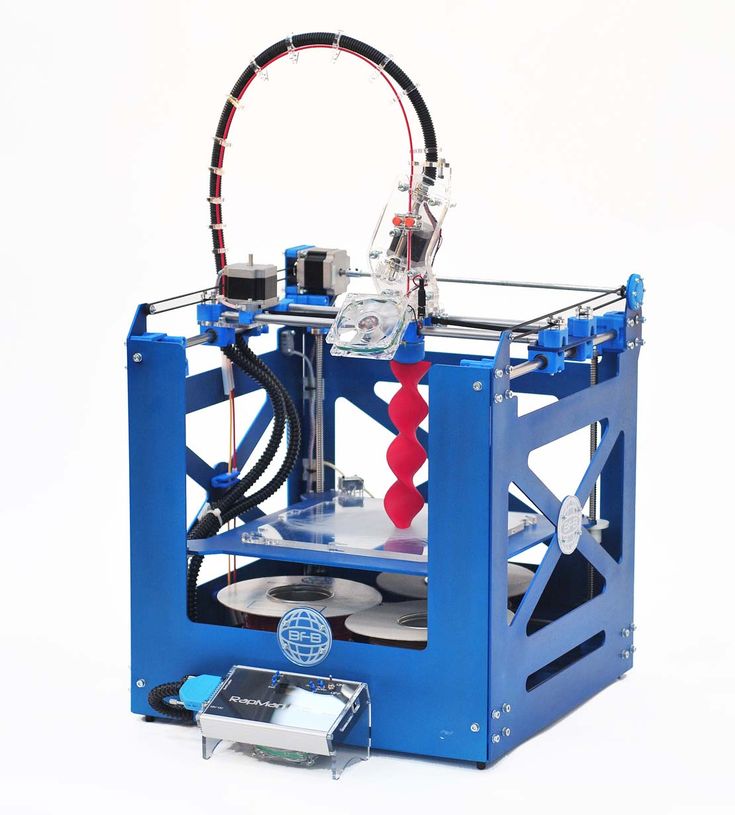What do you mean by 3d printing
What is 3D printing?
David Roberson3 May 2021
Guide
3D printing is a manufacturing process that creates a physical object from a digital model file. The technology works by adding layer upon layer of material to build up a complete object.
Introduction to 3D printing
The 3D printing process was devised in the 1980s and originally known as ‘rapid prototyping’. It enabled companies to develop prototypes quickly and more accurately than with other methods. After over 30 years of innovation, its uses are far more diverse today.
Manufacturers, engineers, designers, educators, medics, and hobbyists alike use the technology for a huge range of applications.
3D printing is an 'additive’ manufacturing process which builds up an object in layers
A 3D printed part in use in the automotive industry
The development of more compact ‘desktop’ 3D printers and their affordable cost have also made the technology increasingly accessible over time.
How does 3D printing work?
As we saw earlier, the 3D printing process involves building up layer upon layer of molten plastic to create an object. As each layer sets, the next layer is printed on top and the object is built up.
To make a 3D print, a digital file is needed that tells the 3D printer where to print the material. The most common file format for this is the G-code files. This file essentially contains ‘coordinates’ to guide the printer’s movements, both horizontally and vertically – also known as the X, Y, and Z axes.
3D printers can print these layers at different thicknesses, known as layer height. A bit like pixels on a screen, more layers in a print will give a higher ‘resolution’. This will give a better-looking result, but take longer to print.
3D printing vs. additive manufacturing?
This adding up of layers gives 3D printing its alternative name – ‘additive manufacturing’.
You will often see the terms used to refer to the same manufacturing process. Additive manufacturing is the opposite of ‘subtractive’ processes where material is removed (or subtracted) from a larger block to create the final object, for example CNC machining.
Additive manufacturing is the opposite of ‘subtractive’ processes where material is removed (or subtracted) from a larger block to create the final object, for example CNC machining.
FDM vs FFF 3D printing – explained
Another thing that may confuse newcomers to 3D printing is seeing references to FDM (fused deposition modeling) and FFF (fused filament fabrication) processes. Again, these are essentially different names for the same thing as they both refer to a specific type of 3D printer.
There are different types of 3D printer? Yes! But no need to be confused – we’ll take a quick look at these next.
What are the different 3D printing technologies?
Plastics are a versatile type of material, and as a result there are many ways of manufacturing with it. 3D printing is no exception, so let’s explore the different methods.
The most widely used technologies are FFF 3D printing, SLA (stereolithography), and SLS (selective laser sintering).
What is FFF 3D printing?
An FFF printer extrudes a thick string of material, commonly referred to as filament, through a heated nozzle.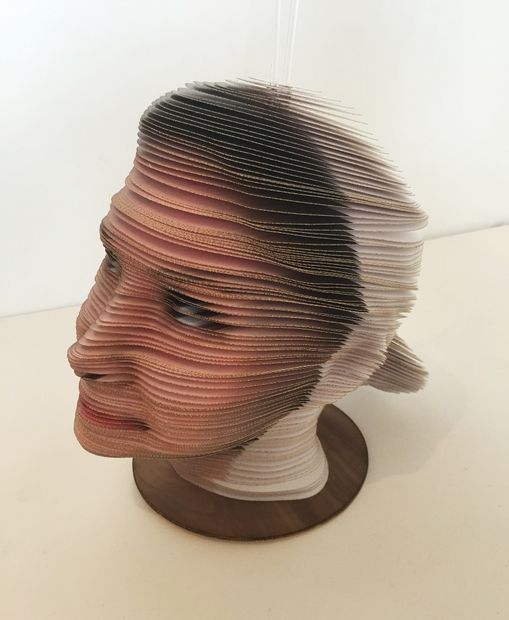 The nozzle is mounted on a motion system that moves it around a build area, where melted filament is deposited onto a build plate. As the material cools and solidifies, the build plate moves down by a fraction of a millimeter layer by layer until the object is complete.
The nozzle is mounted on a motion system that moves it around a build area, where melted filament is deposited onto a build plate. As the material cools and solidifies, the build plate moves down by a fraction of a millimeter layer by layer until the object is complete.
The FFF 3D printing process
What is SLA 3D printing?
SLA 3D printing uses a UV-curable resin as raw material. The resin is poured into a glass-bottomed container, into which a build platform is submerged. A laser shines UV light on the resin to selectively harden a cross-section of the required shape. The platform gradually raises out of the container to build up the print.
What is SLS 3D printing?
SLS 3D printing uses a powdered raw material, typically a polymer. The powder sits in a container, where a blade distributes a thin layer of material onto the build area. A laser fuses the small particles of material together to form a single horizontal layer of the part, then the container then moves a fraction of a millimeter to start a new layer, and the blade swipes across the build area to deposit a new layer of raw material. This process repeats to create the finished object.
This process repeats to create the finished object.
A model printed in resin on an SLA printer
Removing a finished SLS 3D printed part
This is by no means an exhaustive list, and you may also come across the following:
DLP (direct light processing) – A resin-based process similar to SLA. Instead of a laser curing an individual point of resin at a time, DLP uses light to project an image of the entire layer into the resin
Binder jetting – A powder-based process similar to SLS, except that the powder is fused by a binding agent rather than a laser
Material jetting – A variation on ‘2D’ inkjet printing that can create 3D parts by depositing wax or plastic material then curing it with UV light
SLM (selective laser melting) – One of a few similar variations of SLS technology for metal 3D printing
Want to understand the pros and cons of each technology? Read our in-depth guide comparing 3D printing processes.
What materials are used in 3D printing?
Plastic polymers are the most common material used in 3D printing. Using other materials is possible. For example, there are dedicated metal 3D printers, but these are niche compared to polymer printers. And super-sized machines based on 3D printing technology are starting to be developed for construction materials like concrete.
Mainstream 3D printer types such as FFF and SLS can print blends of polymers and other materials (such as metal, glass, or wood). These are known as composites and offer some of the properties of the blended material.
In the context of FFF 3D printing, you may see the terms ‘3D printing material’ and ‘3D printing filament’ used interchangeably. This is because the raw material comes on spools of thin filament.
In the following sections, we will look at some 3D printing filaments in more detail by category.
Starter 3D printing materials
PLA
Derived from organic, renewable resources and easy to print with, PLA is the go-to beginner’s filament. PLA also has great visual properties. But its low temperature resistance and the fact that mechanical properties can degrade over time mean PLA is often overlooked for functional and mechanical applications.
PLA also has great visual properties. But its low temperature resistance and the fact that mechanical properties can degrade over time mean PLA is often overlooked for functional and mechanical applications.
PETG
A well-balanced mix of properties has seen PETG grow to become one of the most widely used 3D printing materials. It could easily be classed as an 'engineering material', but it's also a good option for beginners thanks to good printability. Combining impact and chemical resistance with good thermal properties, while also being cheaper than many other engineering materials, it’s the go-to filament for engineering applications for many users.
Engineering 3D printing materials
Nylon
Possessing chemical resistance and able to withstand significant mechanical stress, nylon is a versatile option for end-use parts.
ABS
Offering superior mechanical and heat resistance properties compared to PLA, ABS is a material for more demanding applications. However, it can be difficult to print with, especially on a cheaper, open-frame 3D printer. An enclosed build chamber and controlled temperature give a much more reliable experience.
However, it can be difficult to print with, especially on a cheaper, open-frame 3D printer. An enclosed build chamber and controlled temperature give a much more reliable experience.
Visual prototypes should have good aesthetic and tactile characteristics
End-use parts need material properties to suit their application, such as wear resistance or flame retardancy
Flexible 3D printing materials
TPU
With its rubber-like properties, TPU can be twisted, stretched, and withstand impacts without problems.
PP
Semi-flexible and fatigue resistant, PP (or polypropylene as you may know it) is ideal for applications that need some flexibility, such as hinges or liquid containers.
Specialist 3D printing materials
Composite materials
These filaments combine a polymer with fibers of another material to give enhanced properties. There are two main categories. Engineering composites including glass, carbon, or metal fibers offer enhanced mechanical properties such as strength and stiffness. And for unique visual properties, there are composite options like ceramic or wood filaments for 3D printing, or even glow-in-the-dark. (Note: the fibers in composite filaments can cause abrasion, so check your printer is compatible before using any).
And for unique visual properties, there are composite options like ceramic or wood filaments for 3D printing, or even glow-in-the-dark. (Note: the fibers in composite filaments can cause abrasion, so check your printer is compatible before using any).
While they sometimes overlap with the categories above, there are many more specialist 3D printing filaments to discover on the market, such as ESD-safe or flame-retardant materials.
Support materials
First, let’s quickly explain what these are.
Each new layer of a 3D print requires the layer underneath to support it. Issues arise when a print’s design requires an overhang, or an element that’s suspended in mid-air. So these materials literally ‘support’ it during the printing process and are removed after. Supports can be printed with the same material as the rest of the print, but their removal can affect its surface quality and dimensional accuracy. To avoid this, specialized support materials have been developed.
Soluble support material
Soluble support materials are dissolvable, so there is no risk of damaging your part during manual removal. PVA support material dissolves in water, while HIPS requires the solvent d-limonene.
Breakaway
Somewhere between the options mentioned so far, a material like Ultimaker Breakaway is a distinct support material that is manually removed. This makes the process faster than waiting for it to dissolve, while retaining the part’s dimensional accuracy.
A 3D printed part with support material (left) and after the support material is removed (right)
Curious to discover more?
Explore the topic of 3D printing further with blogs that answer the following questions:
What can you make with a 3D printer?
How to use a 3D printer?
How much does 3D printing cost?
What It Is, How It Works, Examples
By
Adam Hayes
Full Bio
Adam Hayes, Ph.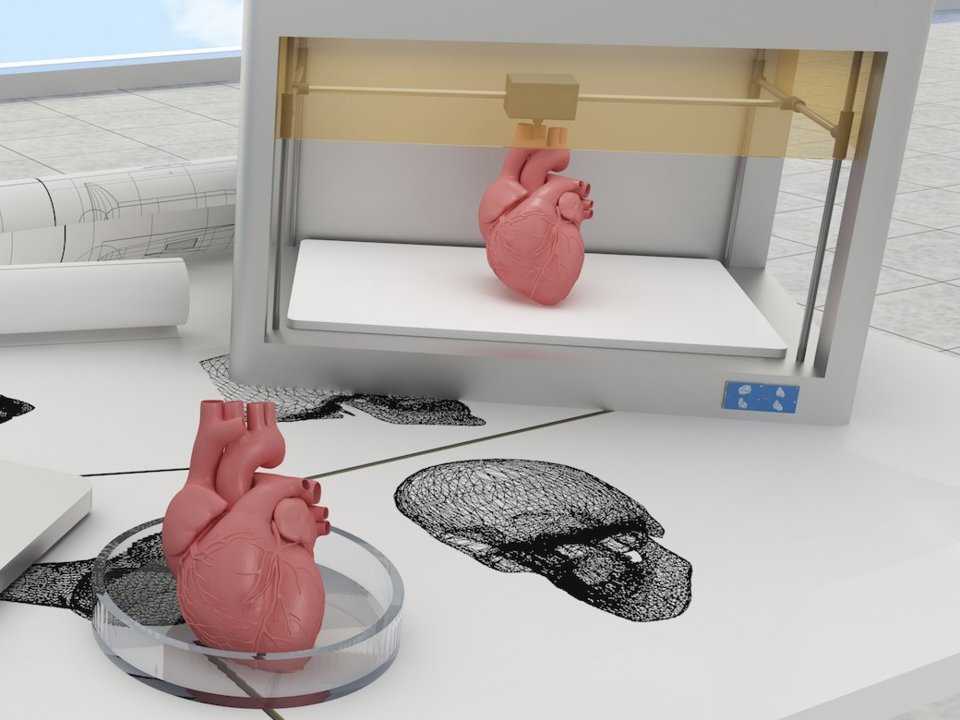 D., CFA, is a financial writer with 15+ years Wall Street experience as a derivatives trader. Besides his extensive derivative trading expertise, Adam is an expert in economics and behavioral finance. Adam received his master's in economics from The New School for Social Research and his Ph.D. from the University of Wisconsin-Madison in sociology. He is a CFA charterholder as well as holding FINRA Series 7, 55 & 63 licenses. He currently researches and teaches economic sociology and the social studies of finance at the Hebrew University in Jerusalem.
D., CFA, is a financial writer with 15+ years Wall Street experience as a derivatives trader. Besides his extensive derivative trading expertise, Adam is an expert in economics and behavioral finance. Adam received his master's in economics from The New School for Social Research and his Ph.D. from the University of Wisconsin-Madison in sociology. He is a CFA charterholder as well as holding FINRA Series 7, 55 & 63 licenses. He currently researches and teaches economic sociology and the social studies of finance at the Hebrew University in Jerusalem.
Learn about our editorial policies
Updated November 29, 2021
Reviewed by
Khadija Khartit
Reviewed by Khadija Khartit
Full Bio
Khadija Khartit is a strategy, investment, and funding expert, and an educator of fintech and strategic finance in top universities. She has been an investor, entrepreneur, and advisor for more than 25 years. She is a FINRA Series 7, 63, and 66 license holder.
She is a FINRA Series 7, 63, and 66 license holder.
Learn about our Financial Review Board
Fact checked by
Vikki Velasquez
Fact checked by Vikki Velasquez
Full Bio
Vikki Velasquez is a researcher and writer who has managed, coordinated, and directed various community and nonprofit organizations. She has conducted in-depth research on social and economic issues and has also revised and edited educational materials for the Greater Richmond area.
Learn about our editorial policies
What Is 3D Printing?
Three-dimensional (3D) printing is an additive manufacturing process that creates a physical object from a digital design. The process works by laying down thin layers of material in the form of liquid or powdered plastic, metal or cement, and then fusing the layers together.
Key Takeaways
- Three-dimensional (3D) printing is an additive manufacturing process in which a physical object is created from a digital design by printing thin layers of material and then fusing them together.

- Some industries, such as hearing aids manufacturers, airline manufacturers, and car manufacturers, use 3D printing to create prototypes and mass produce their products using custom scans.
- While it is currently too slow to be used in mass production, 3D printing technology is still evolving and has the potential to massively disrupt both the manufacturing logistics and inventory management industries.
Understanding 3D Printing
Since it was introduced, 3D printing technology has already increased manufacturing productivity. In the long-term, it has the potential to massively disrupt both the manufacturing, logistics, and inventory management industries, especially if it can be successfully incorporated into mass production processes.
Currently, 3D printing speeds are too slow to be used in mass production. However, the technology has been used to reduce the lead time in the development of prototypes of parts and devices, and the tooling needed to make them. This is hugely beneficial to small-scale manufacturers because it reduces their costs and the time to market, that is, the amount of time from a product being conceived until its being available for sale.
This is hugely beneficial to small-scale manufacturers because it reduces their costs and the time to market, that is, the amount of time from a product being conceived until its being available for sale.
3D printing can create intricate and complex shapes using less material than subtractive manufacturing processes, such as drilling, welding, injection molding, and other processes. Making prototypes faster, easier, and cheaper allows for more innovation, experimentation, and product-based startups.
Industrial Uses
Car and aircraft manufacturers have taken the lead in 3D manufacturing, using the technology to transform unibody and fuselage design and production, and powertrain design and production. Boeing is using 3D-printed titanium parts in the construction of its 787 Dreamliner airliner. In 2017, General Electric created a helicopter engine with 16 parts instead of 900–an indication of how big an impact 3D printing could potentially have on supply chains.
In medical sciences, 3D printing is being used to customize implants. In the future, organs and body parts may be created using 3D printing techniques. In the fashion world, Nike, Adidas, and New Balance are using 3D printing to create their shoes. In the construction industry, companies around the world are making breakthroughs in 3D printing of the materials need to build homes. Using layers of concrete, homes can be built in 24 hours, which are stronger than regular cinder blocks and cost a fraction of the price.
In the manufacturing of hearing aids, 3D printing is now customary. The use of 3D printing accelerates the process of manufacturing and enables manufacturers to make custom hearing aids. Audiologists can use 3D scanners to create a custom prototype using reference points from the scan. Manufacturers can feed the scan into a 3D printing machine and after fine-tuning the materials and the ear shapes, print the entire hearing aids.
Article Sources
Investopedia requires writers to use primary sources to support their work. These include white papers, government data, original reporting, and interviews with industry experts. We also reference original research from other reputable publishers where appropriate. You can learn more about the standards we follow in producing accurate, unbiased content in our editorial policy.
These include white papers, government data, original reporting, and interviews with industry experts. We also reference original research from other reputable publishers where appropriate. You can learn more about the standards we follow in producing accurate, unbiased content in our editorial policy.
Norsk Titanium. "Norsk Titanium to Deliver the World’s First FAA-Approved, 3D-Printed, Structural Titanium Components to Boeing." Accessed Aug. 23, 2021.
General Electric. "An Epiphany Of Disruption: GE Additive Chief Explains How 3D Printing Will Upend Manufacturing." Accessed Aug. 23, 2021.
Nike. "Nike Flyprint is the First Performance 3D Printed Textile Upper." Accessed Aug. 23, 2021.
Adidas. "4DFWD: Data-Driven 3D Printed Performance Technology Designed to Move You Forward." Accessed Aug.23, 2021.
New Balance. "New Balance Launches a Premium 3D Printing Platform." Accessed Aug. 23, 2021.
Sonova.
 "3D Printing Technology for Improved Hearing." Accessed Aug. 23, 2021.
"3D Printing Technology for Improved Hearing." Accessed Aug. 23, 2021.
3D printing for "dummies" or "what is a 3D printer?"
- 1 3D printing term
- 2 3D printing methods
- 2.1 Extrusion printing
- 2.2 Melting, sintering or gluing
- 2.3 Stereolithography
- 2.4 Lamination
- 3 Fused Deposition Printing (FDM)
- 3.1 Consumables
- 3.2 Extruder
- 3.3 Working platform
- 3.4 Positioners
- 3.5 Control
- 3.6 Varieties of FDM printers
- 4 Laser stereolithography (SLA)
- 4.1 Lasers and projectors
- 4.2 Cuvette and resin
- 4.3 Types of stereolithographic printers
3D printing term
The term 3D printing has several synonyms, one of which quite briefly and accurately characterizes the essence of the process - "additive manufacturing", that is, production by adding material.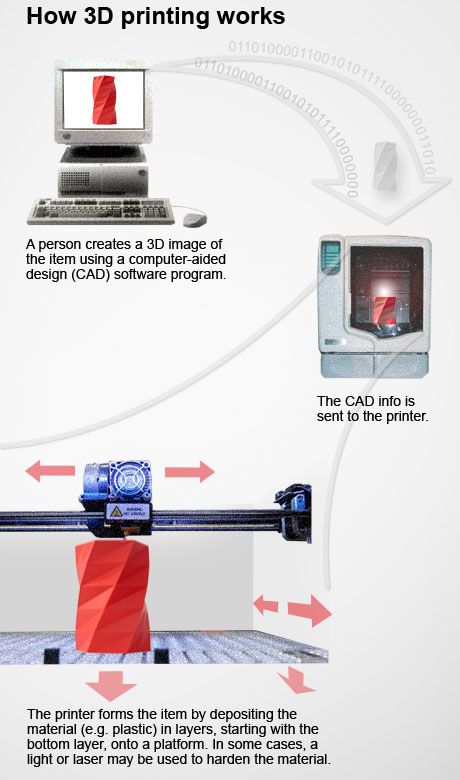 The term was not coined by chance, because this is the main difference between multiple 3D printing technologies and the usual methods of industrial production, which in turn received the name "subtractive technologies", that is, "subtractive". If during milling, grinding, cutting and other similar procedures, excess material is removed from the workpiece, then in the case of additive manufacturing, material is gradually added until a solid model is obtained. nine0048
The term was not coined by chance, because this is the main difference between multiple 3D printing technologies and the usual methods of industrial production, which in turn received the name "subtractive technologies", that is, "subtractive". If during milling, grinding, cutting and other similar procedures, excess material is removed from the workpiece, then in the case of additive manufacturing, material is gradually added until a solid model is obtained. nine0048
Soon 3D printing will even be tested on the International Space Station
Strictly speaking, many traditional methods could be classified as "additive" in the broad sense of the word - for example, casting or riveting. However, it should be borne in mind that in these cases, either the consumption of materials is required for the manufacture of specific tools used in the production of specific parts (as in the case of casting), or the whole process is reduced to joining ready-made parts (welding, riveting, etc./cdn.vox-cdn.com/uploads/chorus_asset/file/15486695/Screen_Shot_2015-09-04_at_8.38.14_AM.0.0.1441370337.png) ). In order for the technology to be classified as “3D printing”, the final product must be built from raw materials, not blanks, and the formation of objects must be arbitrary - that is, without the use of forms. The latter means that additive manufacturing requires a software component. Roughly speaking, additive manufacturing requires computer control so that the shape of final products can be determined by building digital models. It was this factor that delayed the widespread adoption of 3D printing until the moment when numerical control and 3D design became widely available and highly productive. nine0048
). In order for the technology to be classified as “3D printing”, the final product must be built from raw materials, not blanks, and the formation of objects must be arbitrary - that is, without the use of forms. The latter means that additive manufacturing requires a software component. Roughly speaking, additive manufacturing requires computer control so that the shape of final products can be determined by building digital models. It was this factor that delayed the widespread adoption of 3D printing until the moment when numerical control and 3D design became widely available and highly productive. nine0048
3D printing techniques
3D printing technologies are numerous, and there are even more names for them due to patent restrictions. However, you can try to divide technologies into main areas:
Extrusion printing
This includes methods such as deposition deposition (FDM) and multi-jet printing (MJM).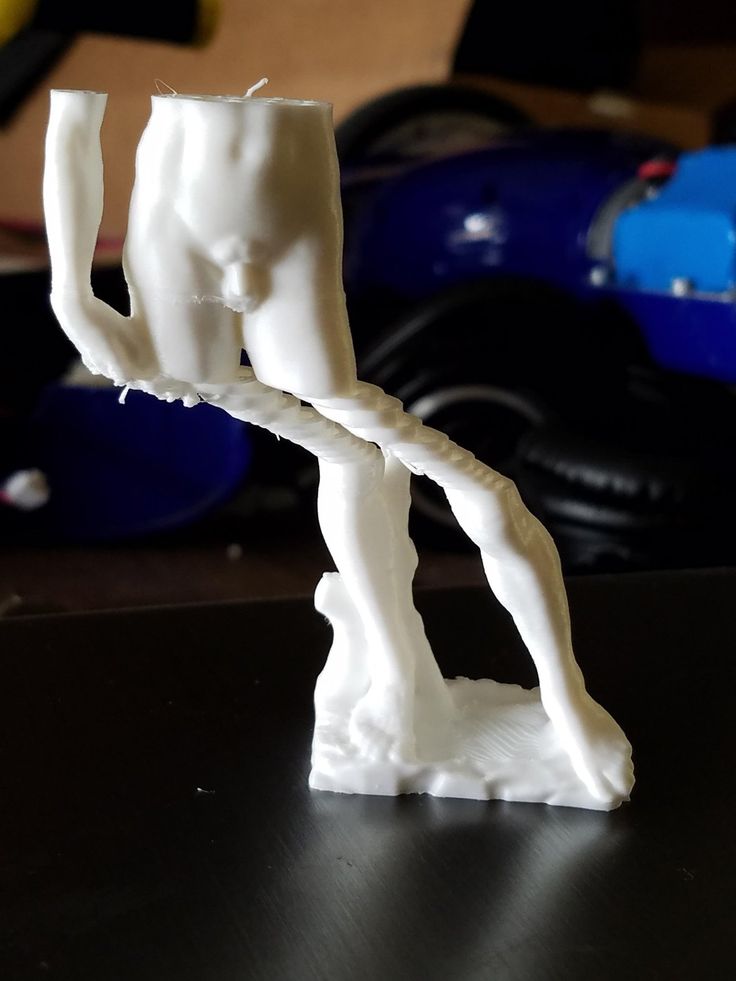 This method is based on the extrusion (extrusion) of consumables with the sequential formation of the finished product. As a rule, consumables consist of thermoplastics or composite materials based on them. nine0048
This method is based on the extrusion (extrusion) of consumables with the sequential formation of the finished product. As a rule, consumables consist of thermoplastics or composite materials based on them. nine0048
Melting, sintering or bonding
This approach is based on bonding powdered material together. Formation is done in different ways. The simplest is gluing, as is the case with 3D inkjet printing (3DP). Such printers deposit thin layers of powder onto the build platform, which are then selectively bonded with a binder. Powders can be made up of virtually any material that can be ground to a powder—plastic, wood, metal. nine0048
This model of James Bond's Aston Martin was successfully printed on Voxeljet's SLS printer and blown up just as successfully during the filming of Skyfall instead of the expensive original
sintering (SLS and DMLS) and smelting (SLM), which allow you to create all-metal parts. As with 3D inkjet printing, these devices apply thin layers of powder, but the material is not glued together, but sintered or melted using a laser.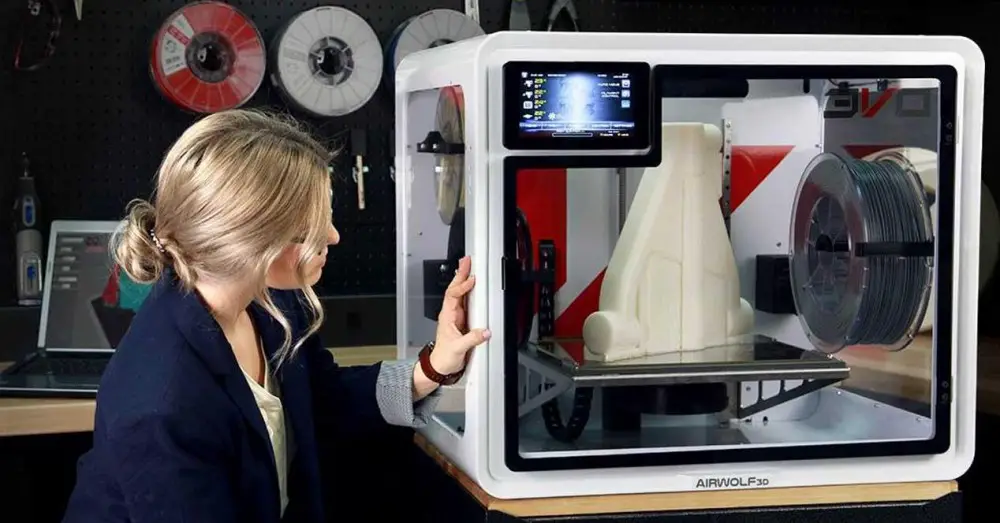 Laser sintering (SLS) is used to work with both plastic and metal powders, although metal pellets usually have a more fusible shell, and after printing they are additionally sintered in special ovens. DMLS is a variant of SLS installations with more powerful lasers that allow sintering metal powders directly without additives. SLM printers provide not just sintering of particles, but their complete melting, which allows you to create monolithic models that do not suffer from the relative fragility caused by the porosity of the structure. As a rule, printers for working with metal powders are equipped with vacuum working chambers, or they replace air with inert gases. Such a complication of the design is caused by the need to work with metals and alloys subject to oxidation - for example, with titanium. nine0048
Laser sintering (SLS) is used to work with both plastic and metal powders, although metal pellets usually have a more fusible shell, and after printing they are additionally sintered in special ovens. DMLS is a variant of SLS installations with more powerful lasers that allow sintering metal powders directly without additives. SLM printers provide not just sintering of particles, but their complete melting, which allows you to create monolithic models that do not suffer from the relative fragility caused by the porosity of the structure. As a rule, printers for working with metal powders are equipped with vacuum working chambers, or they replace air with inert gases. Such a complication of the design is caused by the need to work with metals and alloys subject to oxidation - for example, with titanium. nine0048
Stereolithography
How an SLA printer works
Stereolithography printers use special liquid materials called "photopolymer resins".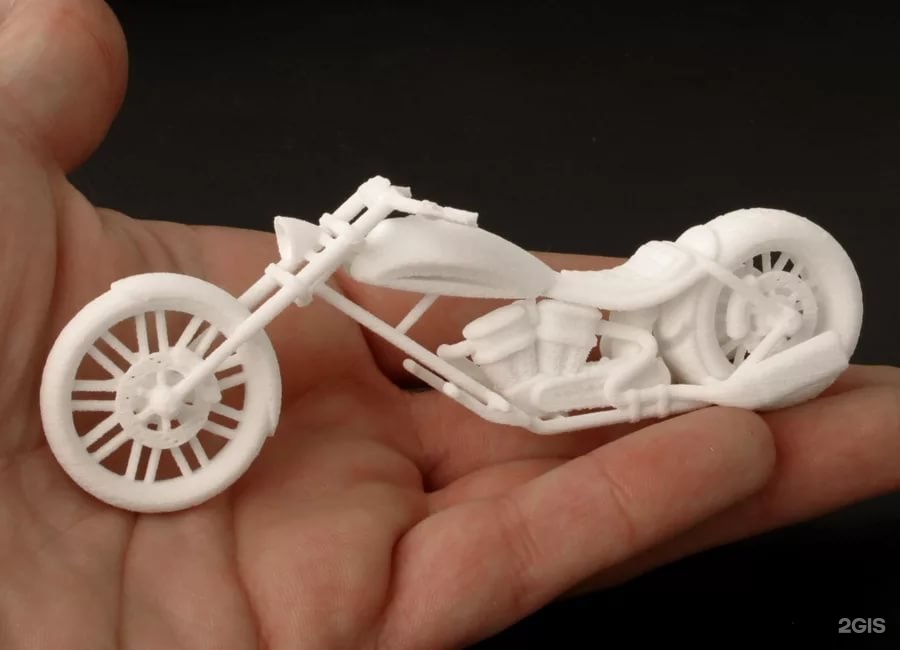 The term "photopolymerization" refers to the ability of a material to harden when exposed to light. As a rule, such materials react to ultraviolet irradiation.
The term "photopolymerization" refers to the ability of a material to harden when exposed to light. As a rule, such materials react to ultraviolet irradiation.
Resin is poured into a special container with a movable platform, which is installed in a position near the surface of the liquid. The layer of resin covering the platform corresponds to one layer of the digital model. Then a thin layer of resin is processed by a laser beam, hardening at the points of contact. At the end of illumination, the platform together with the finished layer is immersed to the thickness of the next layer, and illumination is performed again. nine0048
Lamination
Laminating (LOM) 3D printers workflow
Some 3D printers build models using sheet materials - paper, foil, plastic film.
Layers of material are glued on top of each other and cut to the contours of the digital model using a laser or a blade.
These machines are well suited for prototyping and can use very cheap consumables, including regular office paper. However, the complexity and noise of these printers, coupled with the limitations of the models they produce, limit their popularity. nine0048
However, the complexity and noise of these printers, coupled with the limitations of the models they produce, limit their popularity. nine0048
Fused Deposition Modeling (FDM) and Laser Stereolithography (SLA) are the most popular 3D printing methods used in the home and office.
Let's take a closer look at these technologies.
Fused Deposition Printing (FDM)
FDM is perhaps the simplest and most affordable 3D construction method, which makes it very popular.
High demand for FDM printers is driving device and consumable prices down rapidly, along with technology advances towards ease of use and improved reliability. nine0048
Consumables
ABS filament spool and finished model
FDM printers are designed to print with thermoplastics, which are usually supplied as thin filaments wound on spools. The range of "clean" plastics is very wide. One of the most popular materials is polylactide or "PLA plastic". This material is made from corn or sugar cane, which makes it non-toxic and environmentally friendly, but makes it relatively short-lived. ABS plastic, on the other hand, is very durable and wear-resistant, although it is susceptible to direct sunlight and can release small amounts of harmful fumes when heated. Many plastic items that we use on a daily basis are made from this material: housings for household appliances, plumbing fixtures, plastic cards, toys, etc. nine0048
This material is made from corn or sugar cane, which makes it non-toxic and environmentally friendly, but makes it relatively short-lived. ABS plastic, on the other hand, is very durable and wear-resistant, although it is susceptible to direct sunlight and can release small amounts of harmful fumes when heated. Many plastic items that we use on a daily basis are made from this material: housings for household appliances, plumbing fixtures, plastic cards, toys, etc. nine0048
In addition to PLA and ABS, printing is possible with nylon, polycarbonate, polyethylene and many other thermoplastics that are widely used in modern industry. More exotic materials are also possible, such as polyvinyl alcohol, known as "PVA plastic". This material dissolves in water, which makes it very useful for printing complex geometric patterns. But more on that below.
Model made from Laywoo-D3. Changing the extrusion temperature allows you to achieve different shades and simulate annual rings
It is not necessary to print with homogeneous plastics. It is also possible to use composite materials imitating wood, metals, stone. Such materials use all the same thermoplastics, but with impurities of non-plastic materials.
It is also possible to use composite materials imitating wood, metals, stone. Such materials use all the same thermoplastics, but with impurities of non-plastic materials.
So, Laywoo-D3 consists partly of natural wood dust, which allows you to print "wooden" products, including furniture.
The material called BronzeFill is filled with real bronze, and models made from it can be ground and polished, achieving a high similarity to products made from pure bronze. nine0048
One has only to remember that thermoplastics serve as a binding element in composite materials - they determine the thresholds of strength, thermal stability and other physical and chemical properties of finished models.
Extruder
Extruder - FDM print head. Strictly speaking, this is not entirely true, because the head consists of several parts, of which only the feed mechanism is directly "extruder". However, by tradition, the term "extruder" is commonly used as a synonym for the entire print assembly. nine0048
nine0048
FDM extruder general design
The extruder is designed for melting and applying thermoplastic thread. The first component is the thread feed mechanism, which consists of rollers and gears driven by an electric motor. The mechanism feeds the thread into a special heated metal tube with a small diameter nozzle, called a "hot end" or simply a "nozzle". The same mechanism is used to remove the thread if a change of material is needed. nine0048
The hot end is used to heat and melt the thread fed by the puller. As a rule, nozzles are made from brass or aluminum, although more heat-resistant, but also more expensive materials can be used. For printing with the most popular plastics, a brass nozzle is quite enough. The “nozzle” itself is attached to the end of the tube with a threaded connection and can be replaced with a new one in case of wear or if a change in diameter is necessary. The nozzle diameter determines the thickness of the molten filament and, as a result, affects the print resolution. The heating of the hot end is controlled by a thermistor. Temperature control is very important, because when the material is overheated, pyrolysis can occur, that is, the decomposition of plastic, which contributes both to the loss of the properties of the material itself and to clogging of the nozzle. nine0048
The heating of the hot end is controlled by a thermistor. Temperature control is very important, because when the material is overheated, pyrolysis can occur, that is, the decomposition of plastic, which contributes both to the loss of the properties of the material itself and to clogging of the nozzle. nine0048
PrintBox3D One FDM Printer Extruder
To prevent the filament from melting too early, the top of the hot end is cooled by heatsinks and fans. This point is of great importance, since thermoplastics that pass the glass transition temperature significantly expand in volume and increase the friction of the material with the walls of the hot end. If the length of such a section is too long, the pulling mechanism may not have enough strength to push the thread. nine0048
The number of extruders may vary depending on the purpose of the 3D printer. The simplest options use a single print head. The dual extruder greatly expands the capabilities of the device, allowing you to print one model in two different colors, as well as using different materials. The last point is important when building complex models with overhanging structural elements: FDM printers cannot print “over the air”, since the applied layers require support. In the case of hinged elements, temporary support structures have to be printed, which are removed after printing is completed. The removal process is fraught with damage to the model itself and requires accuracy. In addition, if the model has a complex structure with internal cavities that are difficult to access, building conventional supports may not be practical due to the difficulty in removing excess material. nine0048
The last point is important when building complex models with overhanging structural elements: FDM printers cannot print “over the air”, since the applied layers require support. In the case of hinged elements, temporary support structures have to be printed, which are removed after printing is completed. The removal process is fraught with damage to the model itself and requires accuracy. In addition, if the model has a complex structure with internal cavities that are difficult to access, building conventional supports may not be practical due to the difficulty in removing excess material. nine0048
Finished model with PVA supports (white) before and after washing
In such cases, the same water-soluble polyvinyl alcohol (PVA) comes in handy. Using a dual extruder, you can build a model from waterproof thermoplastic using PVA to create supports.
After printing, PVA can be simply dissolved in water and a complex product of perfect quality can be obtained.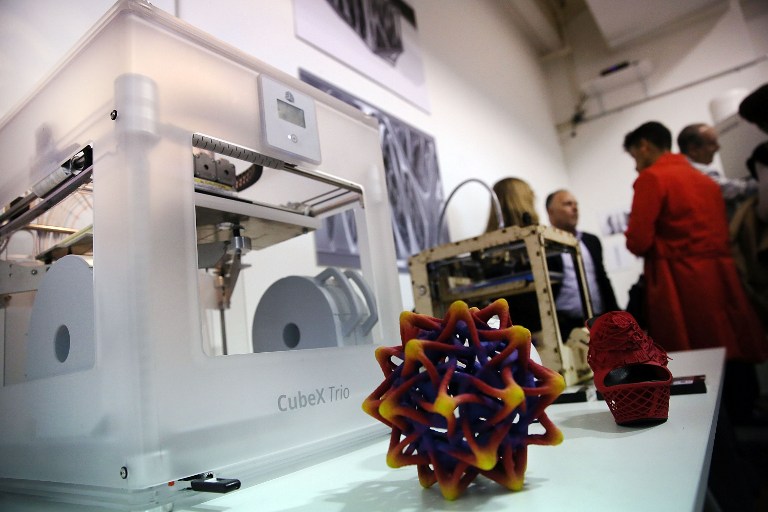
Some FDM printers can use three or even four extruders. nine0048
Working platform
Heated platform covered with removable glass work table
Models are built on a special platform, often equipped with heating elements. Preheating is required for a wide range of plastics, including the popular ABS, which are subject to a high degree of shrinkage when cooled. The rapid loss of volume by cold coats compared to freshly applied material can lead to model distortion or delamination. The heating of the platform makes it possible to significantly equalize the temperature gradient between the upper and lower layers. nine0048
Heating is not recommended for some materials. A typical example is PLA plastic, which requires a fairly long time to harden. Heating PLA can lead to deformation of the lower layers under the weight of the upper ones. When working with PLA, measures are usually taken not to heat up, but to cool the model. Such printers have characteristic open cases and additional fans blowing fresh layers of the model.
Such printers have characteristic open cases and additional fans blowing fresh layers of the model.
Calibration screw for work platform covered with blue masking tape
The platform needs to be calibrated before printing to ensure that the nozzle does not hit the applied layers and move too far causing air-to-air printing resulting in plastic vermicelli. The calibration process can be either manual or automatic. In manual mode, calibration is performed by positioning the nozzle at different points on the platform and adjusting the platform inclination using the support screws to achieve the optimal distance between the surface and the nozzle.
As a rule, platforms are equipped with an additional element - a removable table. This design simplifies the cleaning of the working surface and facilitates the removal of the finished model. Stages are made from various materials, including aluminum, acrylic, glass, etc. The choice of material for the manufacture of the stage depends on the presence of heating and consumables for which the printer is optimized.
For a better adhesion of the first layer of the model to the surface of the table, additional tools are often used, including polyimide film, glue and even hairspray! But the most popular tool is inexpensive, but effective masking tape. Some manufacturers make perforated tables that hold the model well but are difficult to clean. In general, the expediency of applying additional funds to the table depends on the consumable material and the material of the table itself. nine0048
Positioning mechanisms
Scheme of operation of positioning mechanisms
Of course, the print head must move relative to the working platform, and unlike conventional office printers, positioning must be carried out not in two, but in three planes, including height adjustment.
Positioning pattern may vary. The simplest and most common option involves mounting the print head on perpendicular guides driven by stepper motors and providing positioning along the X and Y axes. nine0048
nine0048
Vertical positioning is carried out by moving the working platform.
On the other hand, it is possible to move the extruder in one plane and the platforms in two.
SeemeCNC ORION Delta Printer
One option that is gaining popularity is the delta coordinate system.
Such devices are called "delta robots" in the industry.
In delta printers, the print head is suspended on three manipulators, each of which moves along a vertical rail.
The synchronous symmetrical movement of the manipulators allows you to change the height of the extruder above the platform, and the asymmetric movement causes the head to move in the horizontal plane.
A variant of this system is the reverse delta design, where the extruder is fixed to the ceiling of the working chamber, and the platform moves on three support arms. nine0048
Delta printers have a cylindrical build area, and their design makes it easy to increase the height of the working area with minimal design changes by extending the rails.
In the end, everything depends on the decision of the designers, but the fundamental principle does not change.
Control
Typical Arduino-based controller with add-on modules
The operation of the FDM printer, including nozzle and platform temperature, filament feed rate, and stepper motors for positioning the extruder, is controlled by fairly simple electronic controllers. Most controllers are based on the Arduino platform, which has an open architecture. nine0048
The programming language used by the printers is called G-code (G-Code) and consists of a list of commands executed in turn by the 3D printer systems. G-code is compiled by programs called "slicers" - standard 3D printer software that combines some of the features of graphics editors with the ability to set print options through a graphical interface. The choice of slicer depends on the printer model. RepRap printers use open source slicers such as Skeinforge, Replicator G and Repetier-Host. Some companies make printers that require proprietary software. nine0048
Some companies make printers that require proprietary software. nine0048
Program code for printing is generated using slicers
As an example, we can mention Cube printers from 3D Systems. There are companies that offer proprietary software but allow third-party software, as is the case with the latest generation of MakerBot 3D printers.
Slicers are not intended for 3D design per se. This task is done with CAD editors and requires some 3D design skills. Although beginners should not despair: digital models of a wide variety of designs are offered on many sites, often even for free. Finally, some companies and individuals offer 3D design services for custom printing. nine0048
Finally, 3D printers can be used in conjunction with 3D scanners to automate the process of digitizing objects. Many of these devices are designed specifically to work with 3D printers. Notable examples include the 3D Systems Sense handheld scanner and the MakerBot Digitizer handheld desktop scanner.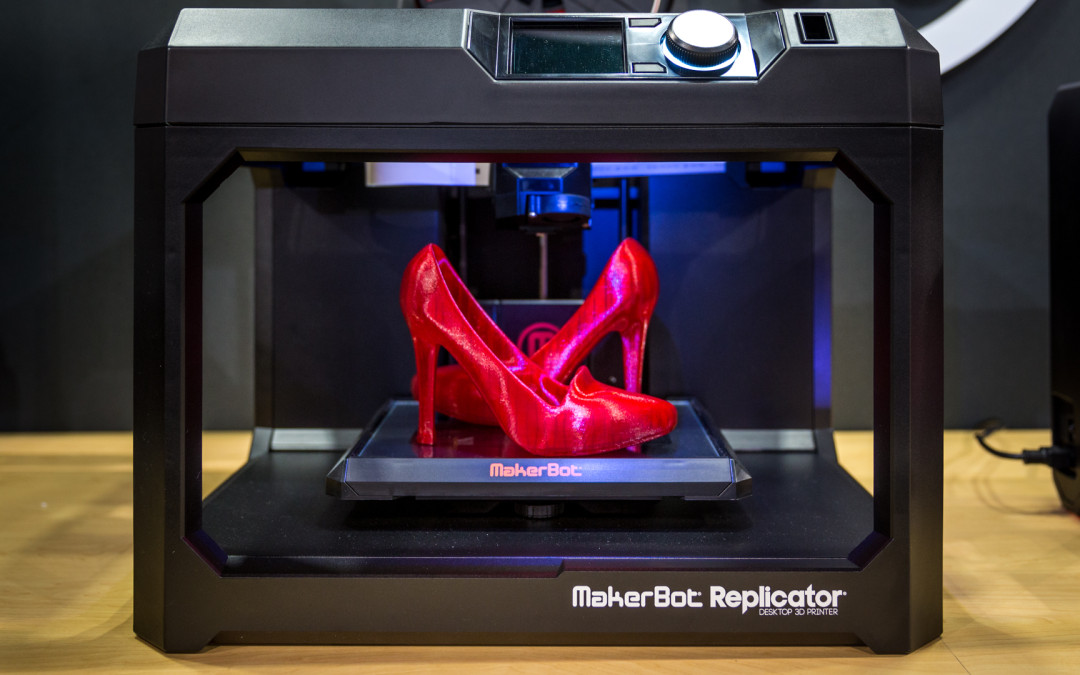
MakerBot Replicator 5th Generation FDM Printer with built-in control module on the top of the frame
The user interface of a 3D printer can consist of a simple USB port for connecting to a personal computer. In such cases, the device is actually controlled by the slicer. nine0048
The disadvantage of this simplification is a rather high probability of printing failure when the computer freezes or slows down.
A more advanced option includes an internal memory or memory card interface to make the process standalone.
These models are equipped with control modules that allow you to adjust many print parameters (such as print speed or extrusion temperature). The module may include a small LCD display or even a mini-tablet. nine0048
Varieties of FDM printers
Professional Stratasys Fortus 360mc FDM printer that allows printing with nylon
FDM printers are very, very diverse, ranging from the simplest homemade RepRap printers to industrial installations capable of printing large-sized objects.
Stratasys, founded by Scott Crump, the inventor of FDM technology, is a leader in the production of industrial installations. nine0048
You can build the simplest FDM printers yourself. Such devices are called RepRap, where "Rep" indicates the possibility of "replication", that is, self-reproduction.
RepRap printers can be used to print custom built plastic parts.
Controller, rails, belts, motors and other components can be easily purchased separately.
Of course, assembling such a device on your own requires serious technical and even engineering skills. nine0048
Some manufacturers make it easy by selling DIY kits, but these kits still require a good understanding of the technology. RepRap Printers nine0048
And, despite their "homemade nature", RepRap printers are quite capable of producing models with quality at the level of expensive branded counterparts.
Ordinary users who do not want to delve into the intricacies of the process, but require only a convenient device for household use, can purchase a ready-made FDM printer.
Many companies are focusing on the development of the consumer market segment, offering 3D printers for sale that are ready to print “right out of the box” and do not require serious computer skills. nine0048
3D Systems Cube consumer 3D printer
The most famous example of a consumer 3D printer is the 3D Systems Cube.
While it doesn't boast a huge build area, ultra-fast print speeds, or superb build quality, it's easy to use, affordable, and safe: This printer has received the necessary certification to be used even by children.
Mankati FDM printer demonstration: http://youtu.be/51rypJIK4y0 nine0048
Laser Stereolithography (SLA)
Stereolithographic 3D printers are widely used in dental prosthetics
Stereolithographic printers are the second most popular and widespread after FDM printers.
These units deliver exceptional print quality.
The resolution of some SLA printers is measured in a matter of microns - it is not surprising that these devices quickly won the love of jewelers and dentists. nine0048
nine0048
The software side of laser stereolithography is almost identical to FDM printing, so we will not repeat ourselves and will only touch on the distinctive features of the technology.
Lasers and projectors
Projector illumination of a photopolymer model using Kudo3D Titan DLP printer as an example
The cost of stereolithography printers is rapidly declining due to growing competition due to high demand and the use of new technologies that reduce the cost of construction. nine0048
Although the technology is generically referred to as "laser" stereolithography, most recent developments use UV LED projectors for the most part.
Projectors are cheaper and more reliable than lasers, do not require the use of delicate mirrors to deflect the laser beam, and have higher performance. The latter is explained by the fact that the contour of the whole layer is illuminated as a whole, and not sequentially, point by point, as is the case with laser options. This variant of the technology is called projection stereolithography, "DLP-SLA" or simply "DLP". However, both options are currently common - both laser and projector versions. nine0048
This variant of the technology is called projection stereolithography, "DLP-SLA" or simply "DLP". However, both options are currently common - both laser and projector versions. nine0048
Cuvette and resin
Photopolymer resin is poured into a cuvette
A photopolymer resin that looks like epoxy is used as consumables for stereolithography printers. Resins can have a variety of characteristics, but they all share one key feature for 3D printing applications: these materials harden when exposed to ultraviolet light. Hence, in fact, the name "photopolymer".
When polymerized, resins can have a wide variety of physical characteristics. Some resins are like rubber, others are hard plastics like ABS. You can choose different colors and degrees of transparency. The main disadvantage of resins and SLA printing in general is the cost of consumables, which significantly exceeds the cost of thermoplastics. nine0048
On the other hand, stereolithography printers are mainly used by jewelers and dentists who do not need to build large parts but appreciate the savings from fast and accurate prototyping. Thus, SLA printers and consumables pay for themselves very quickly.
Thus, SLA printers and consumables pay for themselves very quickly.
Example of a model printed on a laser stereolithographic 3D printer
Resin is poured into a cuvette, which can be equipped with a lowering platform. In this case, the printer uses a leveling device to flatten the thin layer of resin covering the platform just prior to irradiation. As the model is being made, the platform, together with the finished layers, is “embedded” in the resin. Upon completion of printing, the model is removed from the cuvette, treated with a special solution to remove liquid resin residues and placed in an ultraviolet oven, where the final illumination of the model is performed. nine0048
Some SLA and DLP printers work in an "inverted" scheme: the model is not immersed in the consumable, but "pulled" out of it, while the laser or projector is placed under the cuvette, and not above it. This approach eliminates the need to level the surface after each exposure, but requires the use of a cuvette made of a material transparent to ultraviolet light, such as quartz glass.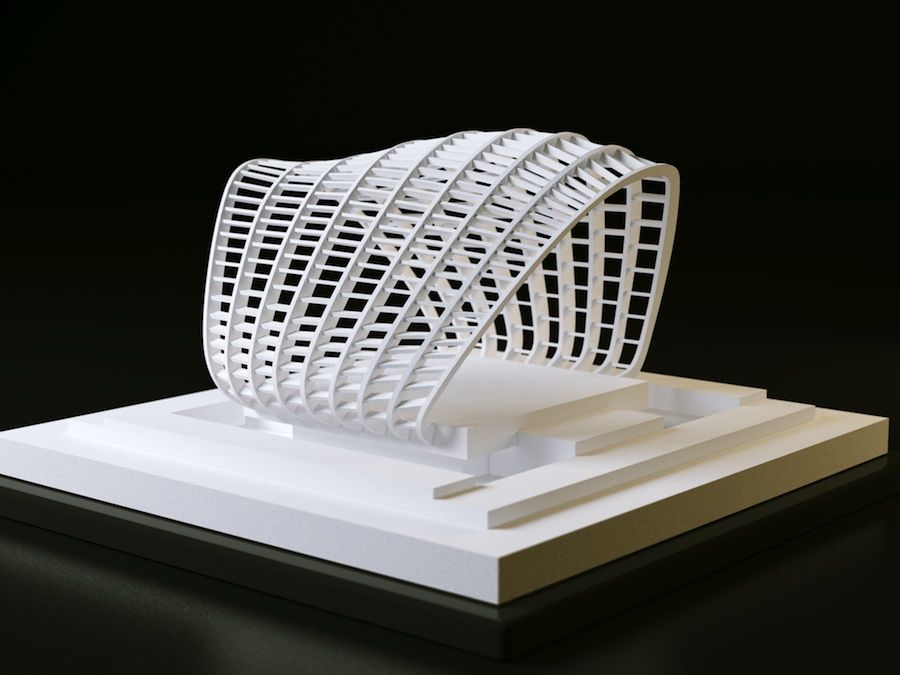
The accuracy of stereolithographic printers is extremely high. For comparison, the standard for vertical resolution for FDM printers is considered to be 100 microns, and some variants of SLA printers allow you to apply layers as thin as 15 microns. But this is not the limit. The problem, rather, is not so much in the accuracy of lasers, but in the speed of the process: the higher the resolution, the lower the print speed. The use of digital projectors allows you to significantly speed up the process, because each layer is illuminated entirely. As a result, some DLP printer manufacturers claim to be able to print with a vertical resolution of one micron! nine0048
Video from CES 2013 showing Formlabs Form1 stereolithography 3D printer in action: http://youtu.be/IjaUasw64VE
Stereolithography Printer Options
Formlabs Form1 Desktop Stereolithography Printer
As with FDM printers, SLA printers come in a wide range in terms of size, features and cost. Professional installations can cost tens if not hundreds of thousands of dollars and weigh a couple of tons, but the rapid development of desktop SLA and DLP printers is gradually reducing the cost of equipment without compromising print quality. nine0048
Professional installations can cost tens if not hundreds of thousands of dollars and weigh a couple of tons, but the rapid development of desktop SLA and DLP printers is gradually reducing the cost of equipment without compromising print quality. nine0048
Models such as the Titan 1 promise to make stereolithographic 3D printing affordable for small businesses and even home use at around $1,000. Formlabs' Form 1 is available now for a factory selling price of $3,299.
The developer of the DLP printer Peachy generally intends to overcome the lower price barrier of $100.
At the same time, the cost of photopolymer resins remains quite high, although the average price has fallen from $150 to $50 per liter over the past couple of years. nine0048
Of course, the growing demand for stereolithographic printers will stimulate the growth in the production of consumables, which will lead to further price reductions.
Go to the main page of the Encyclopedia of 3D printing
Advantages and disadvantages of 3D printing.
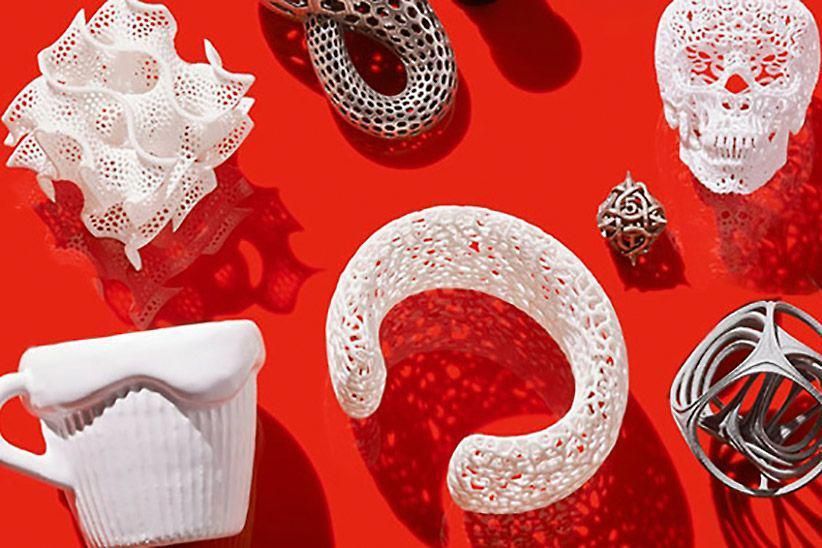 All subtleties and nuances in one post
All subtleties and nuances in one post Introduction.
The invention of 3D printing has revolutionized manufacturing and product development.
3D printing, also called additive manufacturing, entails combining multiple layers of material one after the other until you create a 3D printed model. nine0044 It has become so popular among many manufacturers due to its innovative features that far outstrip those of traditional production.
However, like any other manufacturing method, 3D printing has many disadvantages.
Therefore, in this article, we will tell you about the advantages and disadvantages of 3D printing so that you can learn more about this groundbreaking technology.
Benefits of 3D printing.
The reason 3D printing has become so popular is because of its advantages over traditional manufacturing methods. Here we look at the most significant benefits of 3D printing. nine0048
This is available.
3D printers are more affordable than ever. One of the most popular Creality Ender 3 V2 models is available for just $300.
One of the most popular Creality Ender 3 V2 models is available for just $300.
In addition to the bestseller Ender 3 V2, our catalog contains a selection of kits for building 3D printers, and all of them amaze with their price-quality ratio.
Just 5 years ago it was impossible to buy ready-made equipment at such a low price.
3D printing is a one-step manufacturing process, so it not only saves you the cost of using different manufacturing processes and machines, but also saves you valuable time. nine0048
3D printers don't need constant supervision as they can perform certain tasks once set up; so you don't have to be around all the time.
For example, they can be left to work at night without resorting to expensive night shifts to watch them.
In addition, 3D printing saves on overall material costs by using only the material needed to produce a particular part with no or minimal waste. nine0044 Buying 3D printing equipment can be expensive if you only need to make one part, so it may be cheaper to outsource a project to a 3D printing service company.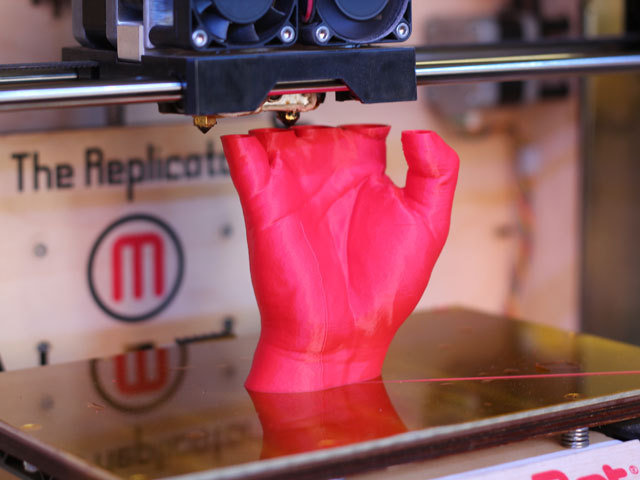
3D4U engineers have hands-on experience in providing custom 3D printing services. You can contact us in any convenient way and we will provide you with support, both in choosing equipment and consumables, and in printing your products.
Rapid prototyping. nine0060
Using 3D printing equipment, you can create prototypes in a couple of hours. This greatly speeds up the design process, meaning you can get parts within hours and be ready for your next project.
In addition, you can quickly and cheaply create a new prototype with each design modification, as opposed to the costly and time-consuming prototyping process with traditional methods.
Strong and lightweight parts. nine0060
Plastic is the main material used in 3D printing, although there are a number of materials available for 3D printing.
3D printing makes it possible to create complex organic shapes that are much lighter than traditionally created parts.
In the aerospace and automotive industries this is a vital factor as the use of lightweight materials helps improve fuel efficiency.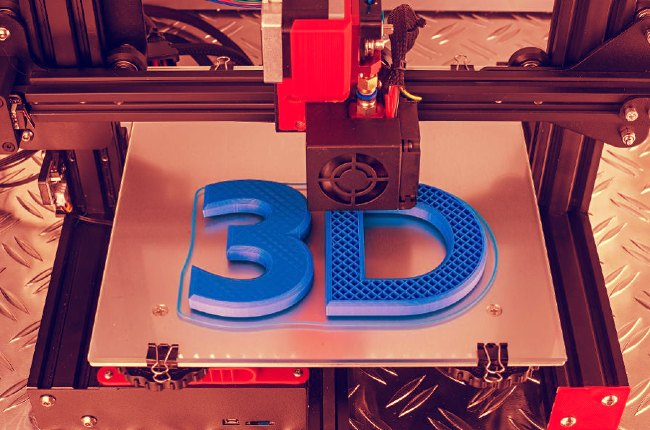
3D printed parts can be made from custom-made materials that have special characteristics such as water repellency, higher strength, and heat resistance. nine0048
Plastics such as PLA can be combined with metals or even wood for unique finishes and properties.
3D printing technology is environmentally friendly.
The use of 3D printing technology reduces the amount of waste generated during the production process.
What's more, this technology helps to further improve the environment, as lightweight 3D printed models can make cars or planes significantly more fuel-efficient. nine0044 You can 3D print using materials that are either recycled or made from plant-based organic materials.
Easy access.
The use of 3D printing equipment has increased in recent years due to greater availability.
Finding a local 3D printing service provider is now easier than ever.
3D printing has become a popular hobby due to its low cost and easy access.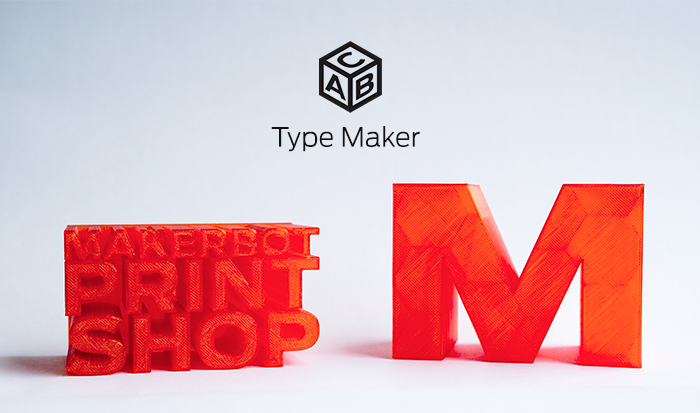 nine0048
nine0048
Many people have integrated 3D printing into their hobbies such as games, fan art or cosplay.
For people who can't afford to buy a 3D printer, there are many so-called manufacturing facilities where sharing a 3D printer is free or inexpensive.
Manufacturers are also turning to 3D printing to save on shipping costs. With most of the traditional manufacturing methods used overseas in countries such as China, 3D printed parts can be made closer to where they are needed for fast response. nine0048
Waste reduction.
3D printing uses only the right material to make certain parts, as it is an additive manufacturing process.
This is different from traditional processing, in which huge masses of non-recyclable materials are cut to form three-dimensional parts.
The total cost of 3D printing is therefore lower because less material is used and you only pay for what you need. nine0048
Improvements in the medical sector.
3D printing has revolutionized the medical sector as it is now possible to print human body organs such as the heart, kidneys and liver.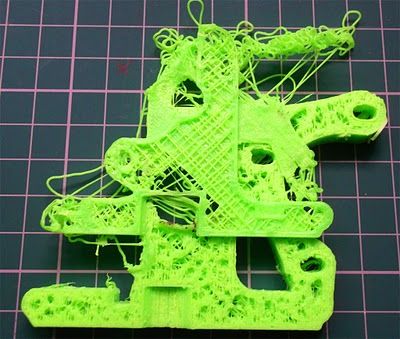
Printing prostheses or hearing aids is no longer a novelty.
In addition, more research is being done on how 3D printing technology can further help the healthcare sector.
Print on request.
Unlike subtractive manufacturing, 3D printing technology does not take up much inventory space as parts can only be printed when ordered or needed. nine0044 Not only will you save on costs, but you will also save space as you only print in bulk when needed.
All 3D design files are stored in a virtual library, from where you can then print them with a 3D model as an STL or CAD file.
Quality and consistency.
Old production methods are usually characterized by poor design, which can lead to poor quality prototypes.
This means that the quality of the product cannot be guaranteed. nine0044 However, this is not the case when 3D printing technology is used, since the product is assembled in a strict step-by-step process, which ensures outstanding product design and quality.
3D printing technology also allows for greater consistency than traditional manufacturing, while still producing consistently high quality parts.
This is possible because errors are detected immediately, helping to reduce the overall number of wasted materials and defective parts. nine0044 Therefore, this technology ensures that parts in a batch are not defective or incompatible when compared to other parts.
Open design and product testing.
The visual appearance of a product, either virtually or on screen, cannot be compared to the actual feel of a prototype that you can experience with 3D printing technology.
In this way, you can physically touch and feel the product prototype and check if there are any flaws in its design. nine0048
In case of an error, you can edit the CAD file and print a new version later.
A physical prototype is invaluable for demonstrating a product to clients or executives who would otherwise find it difficult to validate a product based on a 3D CAD model.
This is one of the main applications of 3D printing in the industry, and it's worth remembering that 3D printing was originally called "rapid prototyping" for this very reason!
Faster production.
Unlike traditional manufacturing methods such as CNC machining and injection molding, 3D printing is significantly faster. nine0048
This is because this technology allows you to quickly test designs and ideas, from prototype to final product.
Therefore, this allows you to spend more time in the market and attract customers before your competitors have finished producing their end products.
Endless geometry and shapes.
Conventional manufacturing methods rely on cutting and shaping techniques to create the desired shapes, which is not only difficult but also expensive.
Luckily, you won't have this problem with 3D printing technology, and all you need is the right supports. nine0048
You can create supports yourself or automatically using the software.
3D printing allows you to create hollow shapes without holes, have extreme undercuts that are impossible with any other production method.
Disadvantages of 3D printing.
Of course, everything will always have its drawbacks! While there are many advantages to 3D printing, there are also disadvantages. Here are the main ones.
Limited build size. nine0060
The size of the camera built into 3D printers is usually relatively small, which limits the size of the parts you can print.
Therefore, any larger item must be printed piece by piece and then assembled after production.
This increases the time it takes to print because the 3D printer needs to print more parts before you can go ahead and manually join the parts.
The designer must decide where to place these breaks so that they do not weaken the surface and ruin the finish of the final piece. nine0048
Structure Details.
In 3D printing, parts are usually created one layer after another, which is why it is also called additive manufacturing. This means that although the layers are firmly held together, they are susceptible to splitting when subjected to loads at certain orientations or stresses.
This means that although the layers are firmly held together, they are susceptible to splitting when subjected to loads at certain orientations or stresses.
This is a problem that is often encountered in products created using fused deposition modeling. In addition, Multijet and Polyjet parts tend to be more fragile. nine0048
In this regard, it may be better to use injection molding in the manufacture of homogeneous parts, since they are stronger and less likely to fail when the structure is loaded.
Loss of jobs in the manufacturing sector.
Using 3D printing allows you to create prototypes and product designs within hours with one simple step.
Most of the subtractive manufacturing steps are eliminated and this helps save on labor costs as fewer people need to be hired to complete the manufacturing process. nine0044 Ultimately, this leads to a reduction in manufacturing jobs, which can be especially detrimental in countries where the majority of citizens depend on low-skill jobs.
Of course, operators and manufacturers of 3D printers are required, which partially compensates for these losses.
3D printing technology is not very user friendly.
Despite the hype about the potential of 3D printing technology, using 3D printers is not as easy as you might think. Since this is a new technology, trial and error is often required when creating parts on a 3D printer. nine0044 Those with previous experience with this technology can fix this problem.
However, until 3D printing becomes widespread, it should be viewed as a technology with a potentially steep learning curve.
Limited materials.
Since 3D printing technology is a recent innovation, the materials needed in the manufacturing process are limited and some are still being developed.
The material of choice for 3D printing is plastic as it melts quickly in layers to make the final item. However, plastic is not the strongest material for all requirements and its strength varies making it not an ideal choice for certain components. nine0044 Metal 3D printing is gradually gaining momentum as a viable technology, but at the moment it is quite expensive.
nine0044 Metal 3D printing is gradually gaining momentum as a viable technology, but at the moment it is quite expensive.
Other specialized materials are also used, including gold and glass, but have yet to be commercialized.
3D printers are expensive.
Of course, we are talking about the industrial sector and industrial 3D printers. At the beginning of the article, we already mentioned that the growth in the production of desktop printers is now at its peak and anyone with an average income can afford to buy a 3D printer. Modern printers for the home are cheaper than laptops, TVs and smartphones. nine0048
The materials and equipment used in industrial 3D printing are expensive, and industrial printers cost hundreds of thousands. Since the initial capital required to use 3D printing technology is prohibitive, many people are unable to enjoy this innovative technology.
What's more, the materials needed to use 3D printing technology can be expensive compared to materials used in traditional manufacturing. nine0044 To get around these costs, many companies rent 3D printing equipment or use a third party to gain access to 3D printers from so-called 3D printing shops.
nine0044 To get around these costs, many companies rent 3D printing equipment or use a third party to gain access to 3D printers from so-called 3D printing shops.
Copyright infringement.
The development of 3D printing technology has led to an increase in counterfeiting cases. This is because now anyone with access to a product blueprint can quickly copy existing products. Because of this, the number of patent infringements has increased, and it is almost impossible to identify a counterfeit product. The development of 3D printing technology has made life difficult for copyright and patent holders to protect the rights to their unique products. nine0048
As with other industries such as the music industry, this is likely to be an ongoing battle with many innovations and legislative changes to combat it.
Manufacture of hazardous goods.
Making explosives, guns, knives, and other dangerous weapons is theoretically more accessible thanks to 3D printing technology. This is because it gives people access to a method of producing items in their own homes, which was previously not possible. nine0044 This has made it difficult for the relevant security authorities to determine when terrorists and criminals are manufacturing weapons. As 3D printing technology becomes cheaper and more user-friendly, the development and production of unlicensed weapons is expected to increase.
This is because it gives people access to a method of producing items in their own homes, which was previously not possible. nine0044 This has made it difficult for the relevant security authorities to determine when terrorists and criminals are manufacturing weapons. As 3D printing technology becomes cheaper and more user-friendly, the development and production of unlicensed weapons is expected to increase.
Of course, media reports of 3D printed weapons have been exaggerated, and in fact, any weapon made from plastic that melts at 200°C will not be very effective. nine0048
In addition, some criminals use 3D printers to create realistic ATM card readers.
Conclusion.
After reading this article, you now know the advantages and disadvantages of 3D printing. So, with that in mind, you can understand why 3D printing has revolutionized manufacturing and gained widespread popularity all over the world.
Similarly, you are also well aware of the disadvantages of 3D printing technology.




